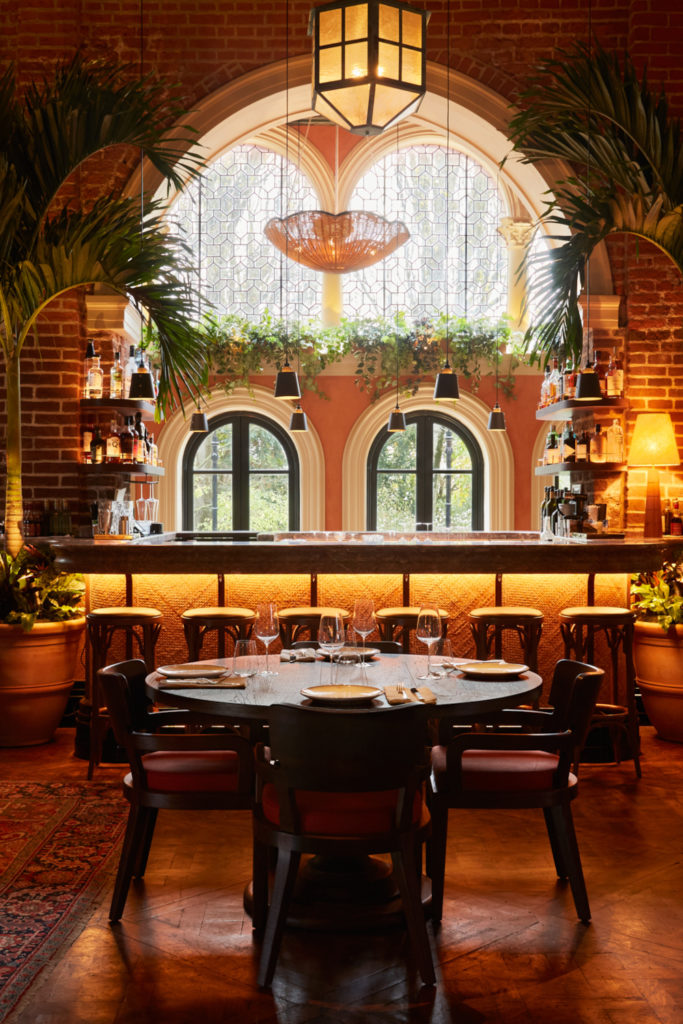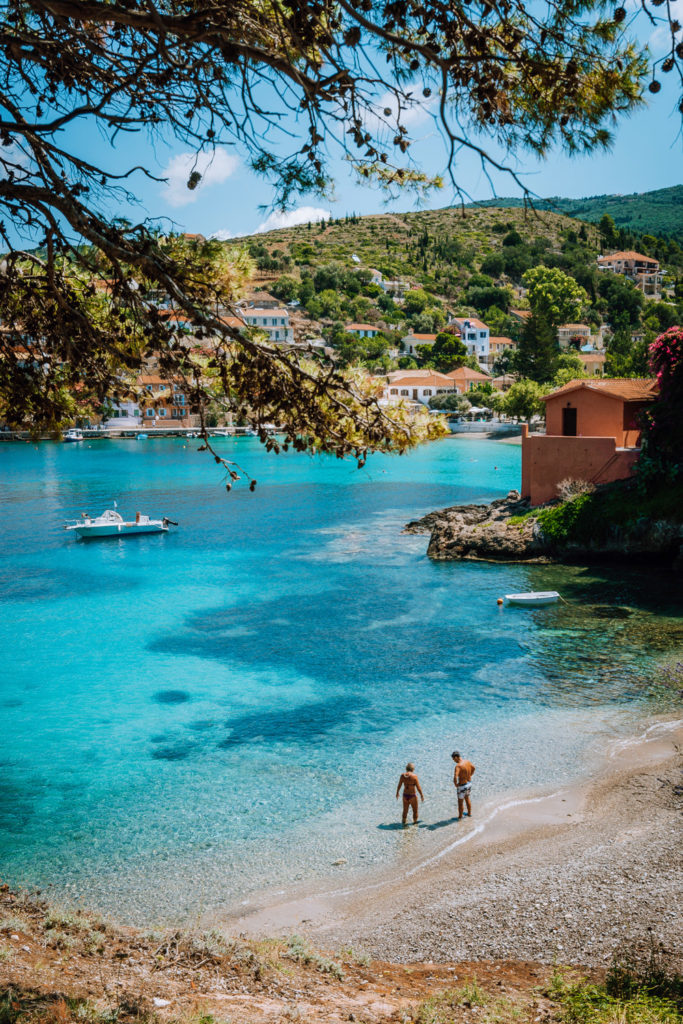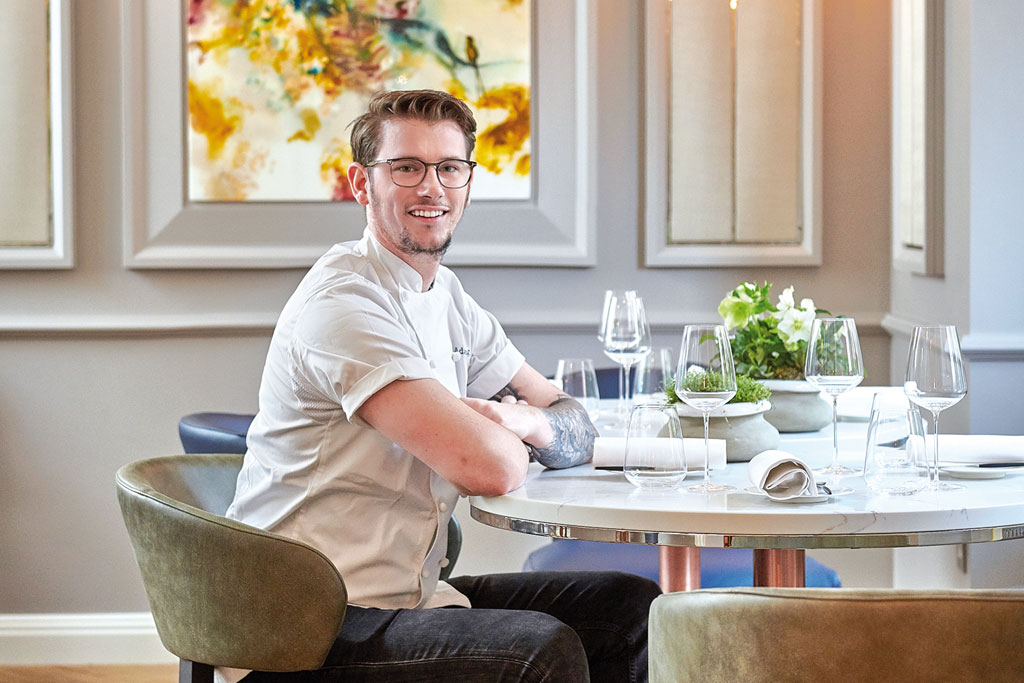A Guide To Wedding Champagne
By
1 year ago
An expert's guide to choosing fizz for your special day
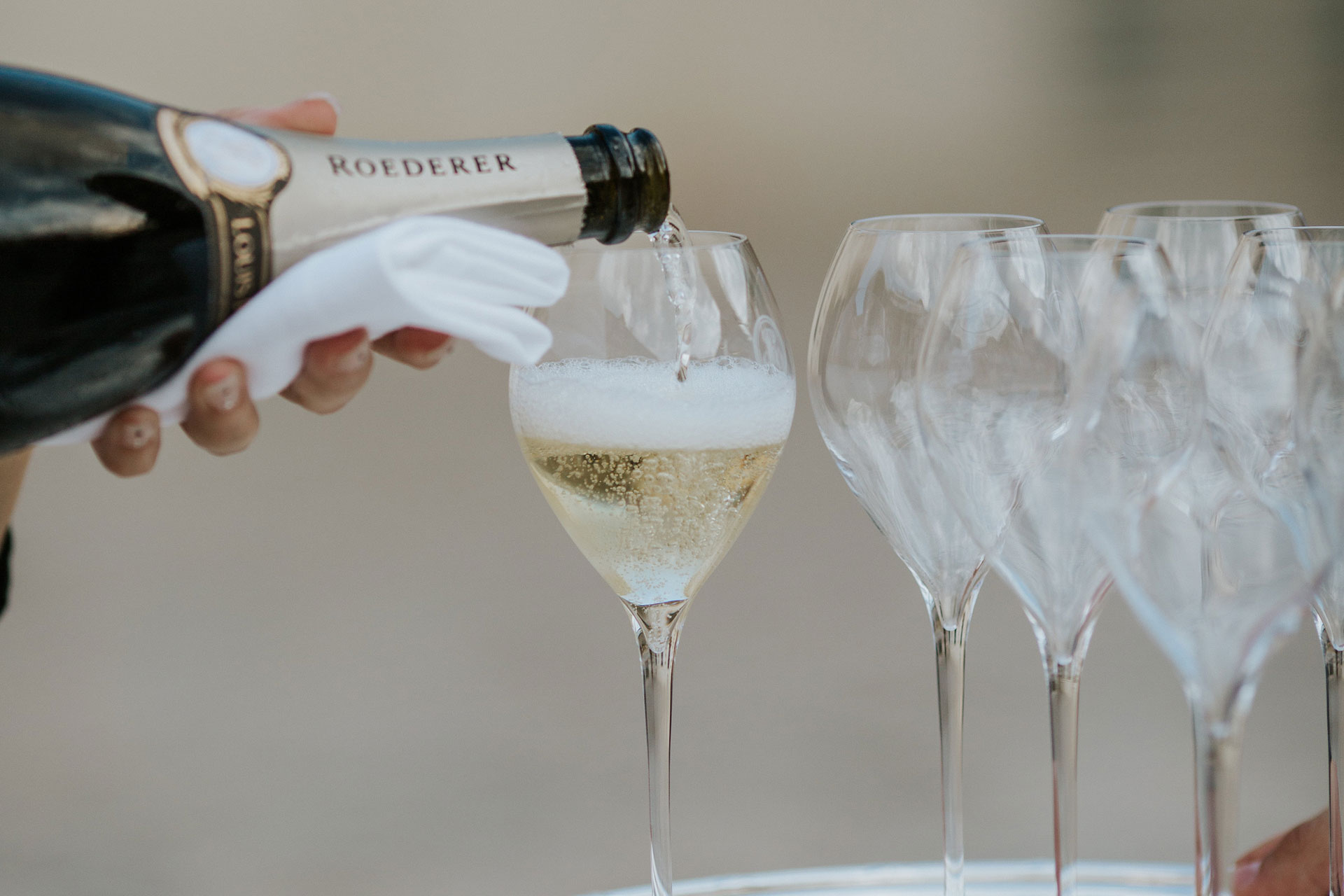
The sound of corks popping, a flute sparkling in the sunlight, that first post-ceremony sip of fizz: champagne is an integral part of a wedding. It’s the ultimate celebratory drink, widely enjoyed at receptions, toasts, cake-cutting and beyond, adding a sense of occasion to events of all shapes and sizes. So how should you go about selecting your fizz? How much will you need? And what’s the correct way to serve it? Read on for everything you need to know about wedding champagne, brought to you in collaboration with Louis Roederer.
Why Is Wedding Champagne So Important?
Nothing says special occasion like a glass (or two, or three) of champagne. But it’s not just about the enjoyment of the day itself: champagne also acts as a memory stimulator for the future. ‘This is the real beauty of champagne,’ says Alexandra Tilling, UK brand ambassador for Louis Roederer. ‘It serves to stimulate three senses: sight (the look of the label), smell and, of course, taste. All of these senses are not only powerful, but highly emotive. The sight, smell and taste of the champagne will trigger memories of that wonderful day, bringing it to the forefront of your memory in the days and years to come.’
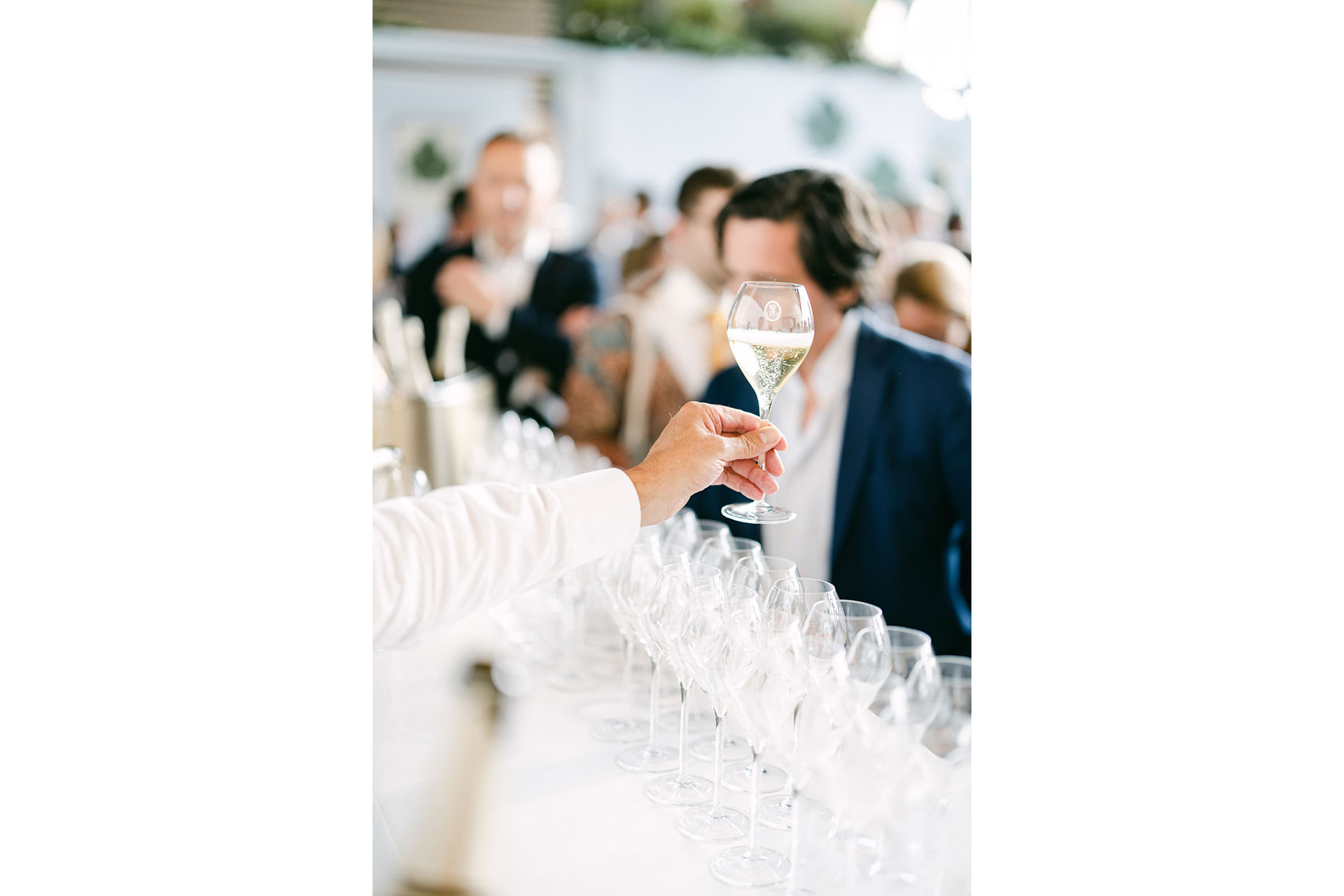
How To Choose Your Wedding Champagne
First thing’s first: the bride and groom must decide which champagne to go for. Like all elements of a wedding, this requires balancing personal tastes with what your guests will enjoy. ‘Your champagne is a statement about you, and it is also where the memories start. You want to look for a champagne that has elegance as well as complexity, subtlety but depth,’ says Tilling. ‘This is important as it needs to appeal to your guests who are wine lovers and will notice and appreciate quality, as well as those who are less knowledgeable and might find a heavy or rich champagne too much, particularly if it is an aperitif.’
Anything we should be avoiding? ‘Steer clear of overly acidic champagne as it can cause heartburn,’ she adds.
How Much Champagne Do You Need For A Wedding?
Selecting the right amount of champagne will depend on your party size – and how much you want to offer your guests. Naturally, if you’re only planning to serve guests a small glass at the reception, you’ll need far less than if you choose to incorporate it into the meal (more on that below).
Tilling recommends: ‘If it is just for the reception the general rule of thumb is half a bottle per head. If you also want champagne poured for a toast, factor in another glass per person (six glasses per bottle).’
And remember: if you have some left over, it’s not the end of the world. ‘Champagne has the ability to age for many many years, particularly if you have chosen a vintage style,’ says Tilling. ‘Keep it in your cellar and you can celebrate your milestones, be they anniversaries, new houses or the birth of your children, with this memorable champagne.’
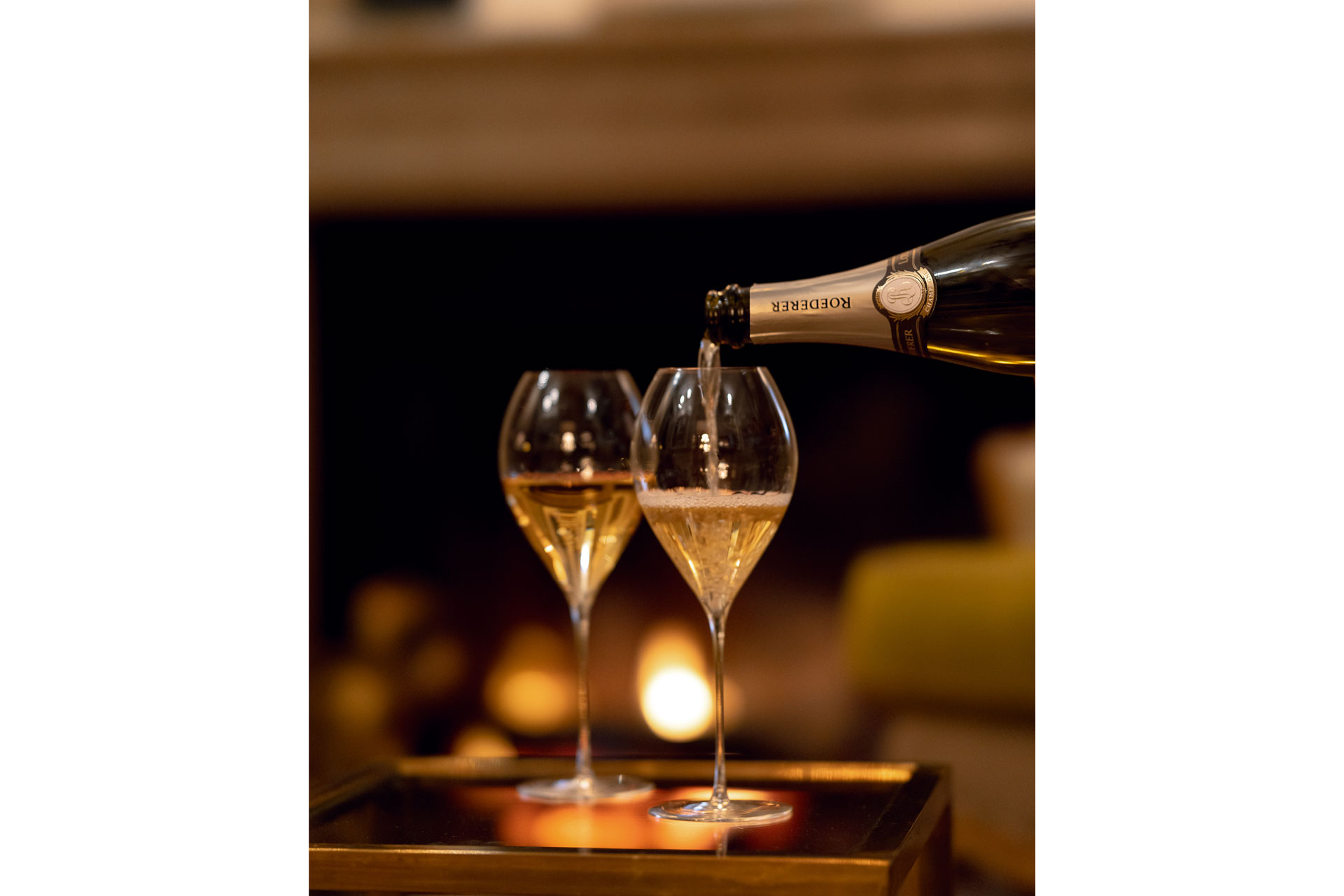
How Should It Be Served?
It’s traditional to serve champagne in a flute, as the elongated, narrow shape helps preserve the bubbles. However, a coupe glass is sometimes preferred: shorter and wider than the flute, it allows a wider surface area for the wine to be exposed to the air, meaning the flavours and aromas can develop over time.
Tilling also suggests using a white wine glass, particularly if you’re serving a top champagne like Louis Roederer. ‘If you have a high-quality champagne, it is best to use a white wine glass as it has the depth to allow the bubbles to formulate, but has a wider bowl than a flute which allows the aromatics of the wine to really open up. Top glass producers such as Riedel have developed specific glass shapes to enhance the specific wine styles.’
Debating whether to do a tower? They might look glamorous – but Tilling advises against it. ‘Champagne towers often lead to the bubbles dissipating and as the glasses lack depth, it is harder for them to show the bead (the stream of bubbles).’ Instead, she suggests serving from a magnum or even a jeroboam to add a touch of theatre, or using larger format bottles to make a showpiece.
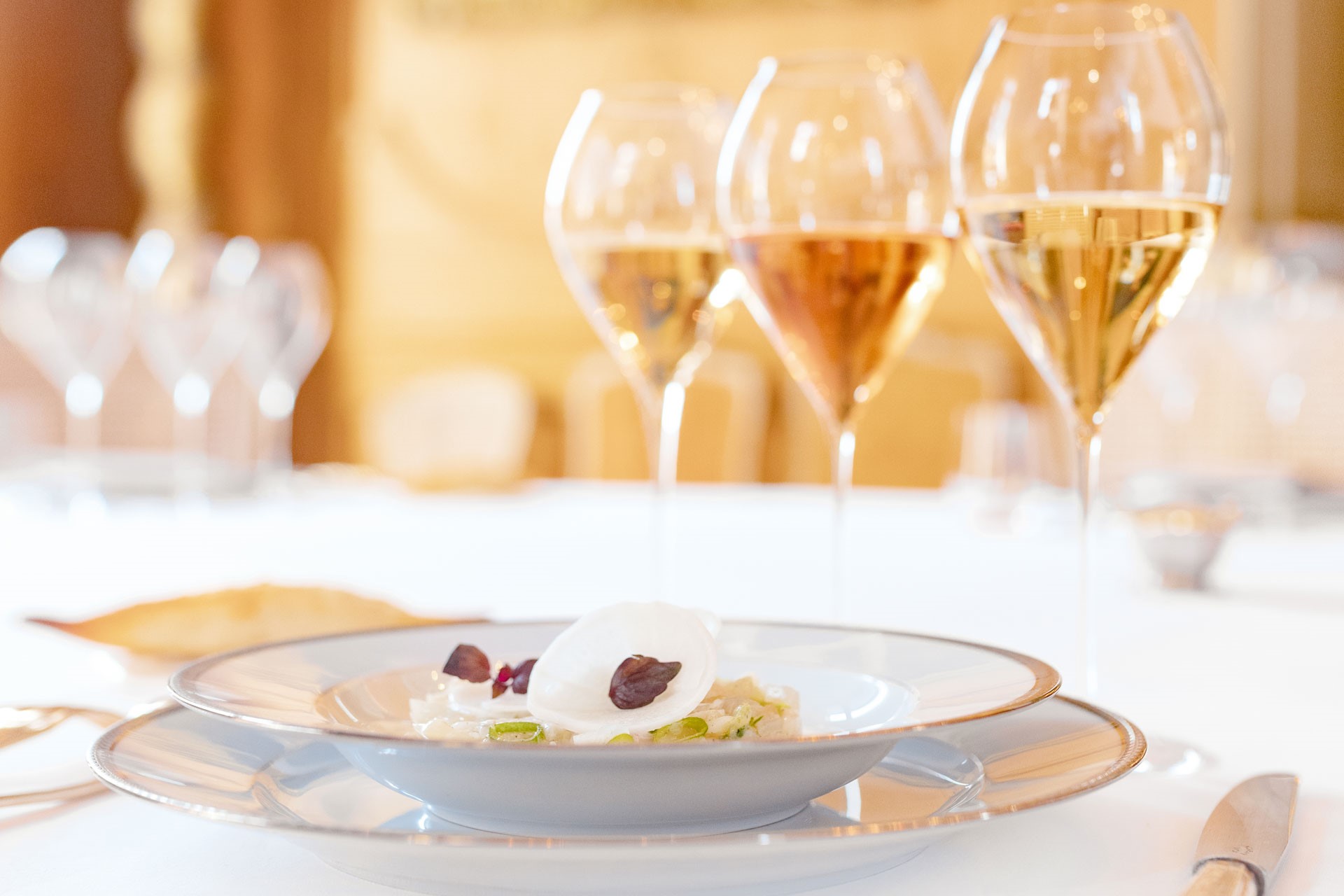
Which Foods Pair Best With Champagne?
The high acidity of good champagne means it pairs excellently with a wide variety of foods, so it’s a great drink to enjoy with some canapes. However, if you have the budget and want to take things to the next level, Tilling suggests incorporating it into the meal, too. ‘Should you be wishing to push the boat out and really surprise people on the day, try serving each course of the meal with a different champagne,’ she says. ‘People mistakenly think of it only as an aperitif, but in France it is regularly drunk throughout the meal.
‘The high acidity cuts beautifully through rich foods such as protein, creamy sauces and cheese, while the concentrated flavour enables it to stand up to bold flavours,’ Tilling explains.
Interested? Here are some pairing ideas.
- Louis Roederer Collection Multi-Vintage is a hugely versatile champagne that can go with light and fresh flavours (fish/citrus/herbs), plus much richer flavours such as wild mushroom, fresh truffle, hazelnut and Moroccan spices
- Louis Roederer Brut Vintage works wonders with richer white meats such as veal or pork
- Louis Roederer Rosé Vintage is incredible with duck, lamb, boudin noir, sausage or tuna steak
- Louis Roederer Brut Nature Vintage (Zero Dosage) is exceptional with cheese such as Langres, as well complex flavours such as smoked chicken and, of course, oysters
- Louis Roederer Brut Nature Vintage Rosé is amazing with Asian food, as well as bold flavours such as barbecued meat through to Korean sauce
- Louis Roederer Cristal is beauty personified and works fabulously with anything, from roast chicken to sea bass in lemongrass and ginger, lobster to aged comte
- Louis Roederer Carte Blanche Demi Sec works well with wedding cake or fruit dessert
Shop the brand at louis-roederer.com

